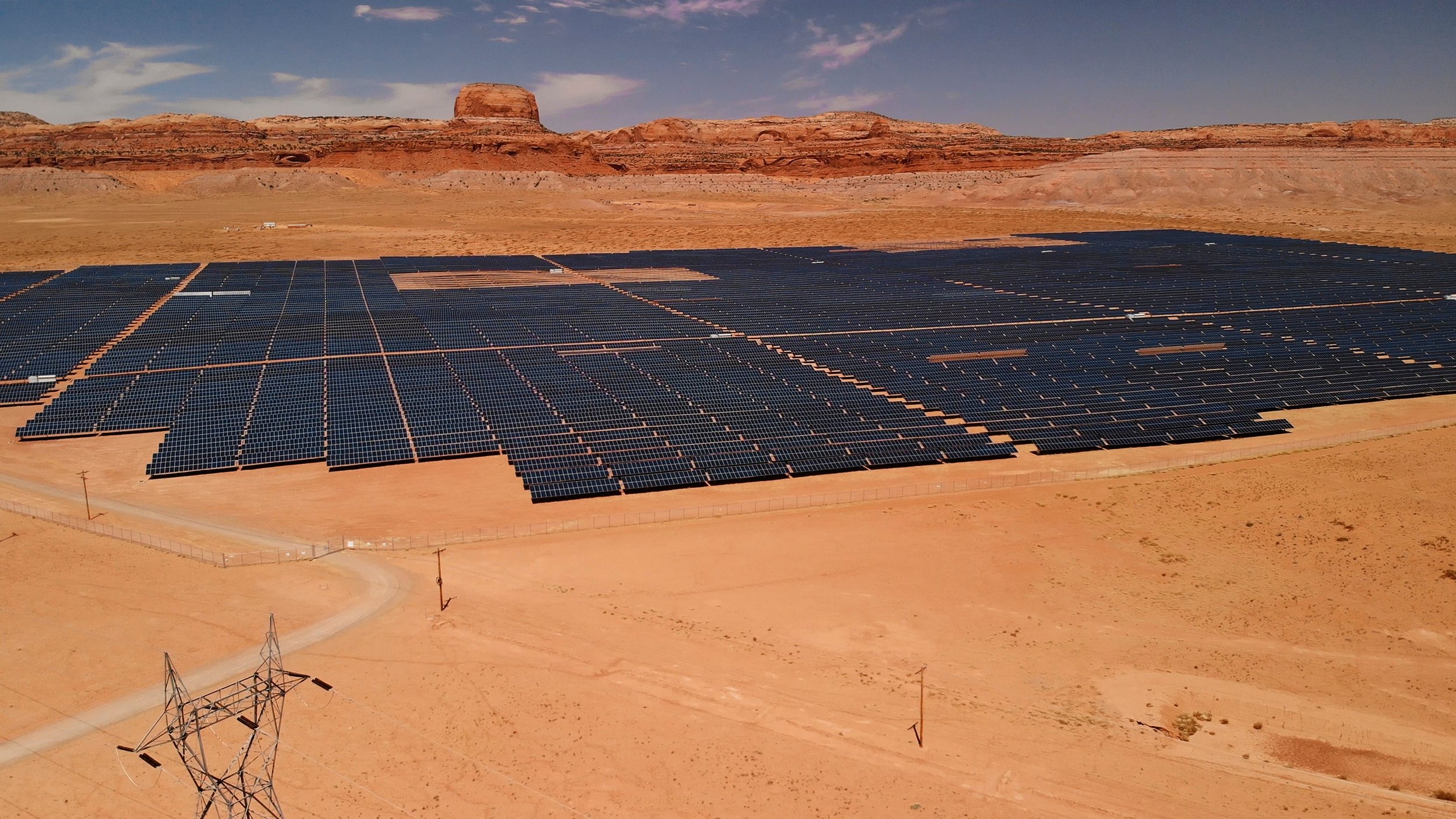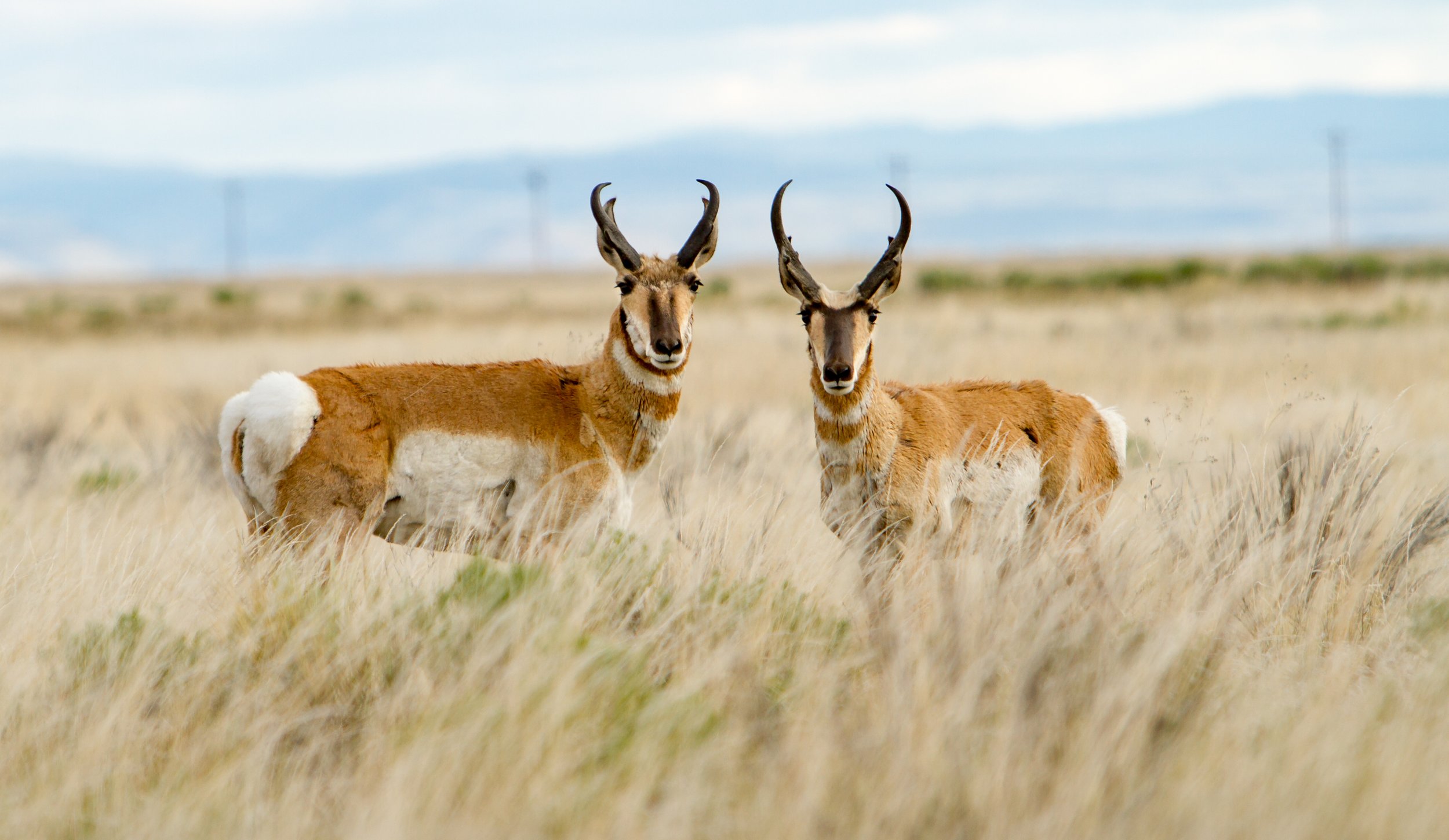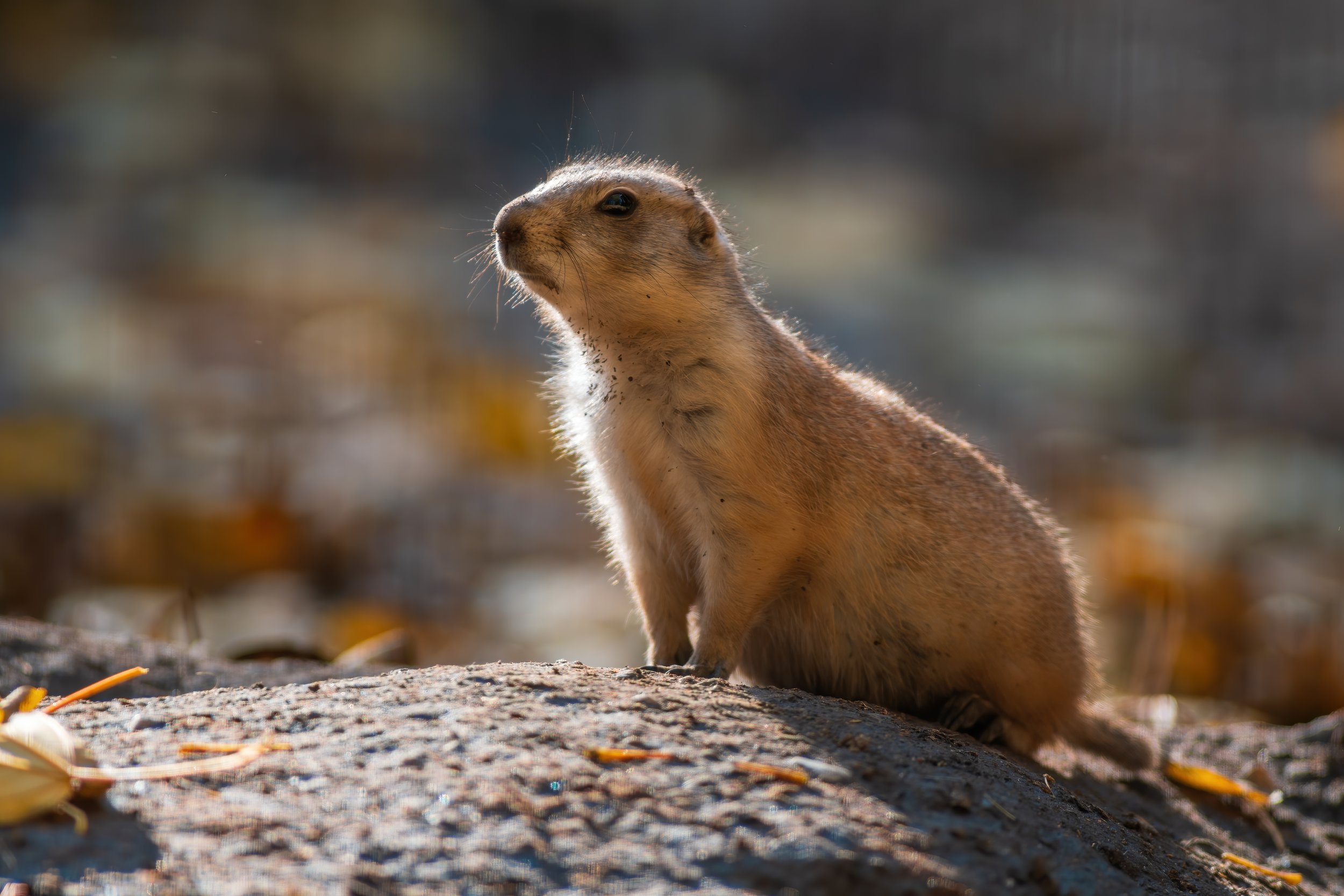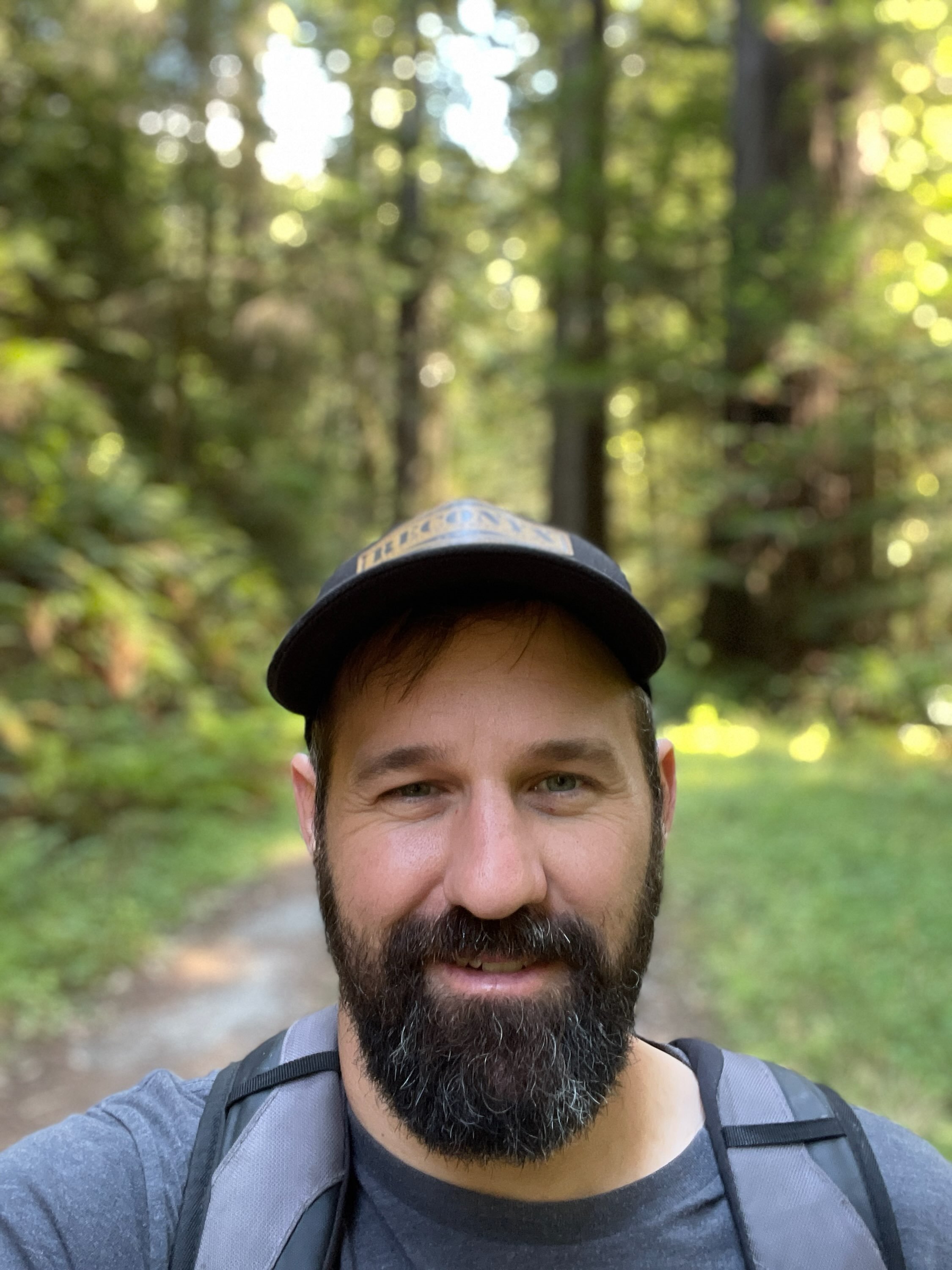Wildlife & Renewable Energy
How Will Solar Energy Development Impact Wildlife Movement?
Renewable energy is rapidly developing across North America to meet our carbon-neutral needs. In the coming years, land developed to produce wind and solar energy will likely have significant implications for wildlife and their habitat.
Utility-scale solar energy (USSE), in particular, could affect landscape-scale habitat connectivity by directly altering habitat with solar panels or restricting wildlife movement due to fencing and new roads.
Large mammals like mule deer, elk, bears, mountain lions, and pronghorn can’t pass through fencing that must surround solar facilities. Individuals or whole populations could be affected if utility-scale solar energy installations impede access to critical resources or cause them to alter their daily or seasonal movement patterns.

Under status-quo development practices, the deployment of wind and solar would require over 250,000 square miles by 2050.
Mule deer, elk, pronghorns, and many other species could be affected by solar development.
$455 billion was announced invested in U.S. utility-scale clean energy from August 2022-July 2023.
The Challenge
To protect these ecosystems, all practitioners, including regulators, developers, and wildlife managers, need to understand how the development of utility-scale solar energy will impact wildlife and how to minimize those impacts. Because there has not been sufficient research on how large wildlife interact with these kinds of developments, presently, we have insufficient information and no standardized methods to do so.
Additionally, no existing regulatory or environmental standards consider the compounding effects of multiple projects on neighboring lands, especially across jurisdictions.
The Goals
To fill these information gaps, we’re conducting one of the largest-scale analyses of the impact of solar development on wildlife to date, with a focus on ungulates, carnivores, and other important species like prairie dogs, rabbits, and raptors.
The goals of our study are:
1. To improve the understanding of how USSE development interacts with wildlife
2. To develop methods and resources that can help practitioners identify and reduce wildlife conflict in their solar projects
“We want to shift the paradigm to integrate wildlife needs in solar site development and mitigate their effects on wildlife.”
Aaron Facka
Principal Investigator
Our Process
We are studying pronghorn and other species that share their habitat like prairie dogs, badgers, and kit foxes in two areas in Arizona and New Mexico.
To understand interactions between these species and USSE development, we’re monitoring select wildlife’s presence, relative abundance, habitat needs, and movements before and after solar development over the course of four years.

Why pronghorn?
Pronghorn are a highly visible and charismatic ungulate species whose general habitat overlaps with ideal locations for USSE development. As a result, they are likely one of the species most directly impacted by solar development and are accessible to study at a large scale.
The results from this project will not only apply to the study areas, but will also provide inference to similar environments west of the Mississippi. Hundreds of solar projects could benefit from this information.
How are we monitoring these species?
We’re using multiple sampling methodologies by capturing comprehensive data through a variety of tools, including:
Drone surveys
GPS collars
Remote camera surveys
Visual surveys
Sign transect surveys
We’ll apply the spatial information we collect to improve or develop new habitat modeling tools that could inform solar siting, enable solar project evaluation of potential impacts, and improve other wildlife management decisions in the region.
Our Collaborators
Navajo Nation
Ute Mountain Ute
New Mexico Department of Game and Fish
New Mexico State Land Office
Bureau of Land Management – Farmington Field Office
GeoSystems Analysis
Solariant LLC
We’re partnering with a diversity of stakeholders in the Four Corners region, including state and federal agencies, Tribal nations, and private companies.
Tribal Partnerships
Despite Tribal nations’ vested cultural and ancestral interest in protecting their land and its wildlife, they are historically underfunded and don’t have the resources necessary to fully monitor and manage the wildlife living on their land.
This project will increase capacity within natural resource departments for the Navajo Nation and the Ute Mountain Ute Tribe by collecting wildlife data on Tribal lands and developing cost-effective methodologies for monitoring species. Field technicians from the Navajo and Ute Mountain Ute Tribes will work with us to gather data, representing Tribal values and knowledge on the ground.
Our Progress
-
Data collection has spanned both construction and post-construction periods of an 1100-acre solar facility in northwestern New Mexico
We are collecting the only known dataset for pronghorn, or other large ungulates, near solar facilities that contain inter-array passages.
Our project is providing unique data and insights from the desert Southwest on solar and wildlife issues.
Solar developers, environmental consultants, and wildlife agencies are interested in our research findings to help inform monitoring protocols and development decisions.
-
Since October of 2023, we have conducted 10 rounds of visual and sign surveys, 7 drone flights, and 18 camera checks at each of our 50 study hexagons.
All four methods successfully documented pronghorn, and each survey method observed numerous other wildlife species.
Pronghorn have been detected at 86% of sampling hexagons by sign surveys, 82% by camera surveys, 26% by drone surveys, and 16% by visual surveys.
We have reviewed over 4 million photos from 100 trail cameras, documenting 19 different mammalian species.
We have conducted initial analyses comparing these sampling methods with respect to their ability to estimate rates of detection and occupancy and to inform patterns of habitat use.
-
In March 2024, we deployed 60 tracking collars on female pronghorns spread evenly in our two study areas, and in January of 2025 deployed an additional 15 collars in these same areas.
To date, we have collected over 700,000 locations from pronghorn, with each collar collecting 24 locations per day.
We have quantified home ranges, space-use, and movements of at least 22 females within 100m of solar fencing, including many pronghorns using passages between individually fenced solar arrays.
This dataset will allow us to elucidate how space use of pronghorns changes seasonally, and additionally how space use changed between construction and post-construction periods.
-
We have presented our research at a multitude of conferences and symposiums, including:
The American Clean Power's Siting and Permitting Conference (2023, 2024 & 2025)
REWI Solar Power and Wildlife/Nature Resources Symposium (2023 & 2025)
The Wildlife Society National Conference (2024)
Western Association of Fish and Wildlife Agencies - Pronghorn Workshop (2024)
Native American Fish and Wildlife Society Southwest Regional Conference (2024 & 2025)
Wallace Stegner Center for Land, Resources and the Environment Symposium (2024)
Burns and McDonnell Wildlife & Permitting Symposium (2023 & 2025)
Arizona / New Mexico Chapter of The Wildlife Society - Joint Annual Meeting (2024 & 2025)
PEW Corridors, Connectivity, and Crossings Conference (2025)
Additionally, we have discussed our research with a variety of interested developers, wildlife managers, scientists, and local entities.
-
We have developed a list of potential products to be produced from our project, incorporating feedback from outreach opportunities, meetings with project partners, and other interested parties to refine these ideas further.
As of August 2025, we are working towards producing our first manuscript that we will submit for peer-review in early 2026.
We are working on analyses and manuscripts for at least 3 other peer-reviewed papers.
We have produced plans for several other practitioner-based tools or products that have been reviewed and evaluated by industry, wildlife managers, and other important stakeholders.
Click plus symbols to expand
Stories
Our Team
Aaron Facka, PhD
Principal Investigator
For questions about science or research, contact Aaron at aaron@wildlandsnetwork.org
Michael Dax
Project Administrator &
Outreach Coordinator
For questions about project details or coordination, contact Michael at michael@wildlandsnetwork.org
Kevin Smith
Field Manager
For questions about field work, contact Kevin at kevin@wildlandsnetwork.org
Collin Acoya Sanchez
Wildlife Technician
Jamie Buchanan
Wildlife Technician
Resources
Funding
This project is funded by the U.S. Department of Energy Solar Energy Technologies Office.
About the Solar Energy Technologies Office
The U.S. Department of Energy Solar Technologies Office supports solar energy research, development, demonstration and technical assistance to improve the affordability, reliability, and domestic benefit of solar technologies on the electric grid.
Learn more at energy.gov/eere/solar.





















